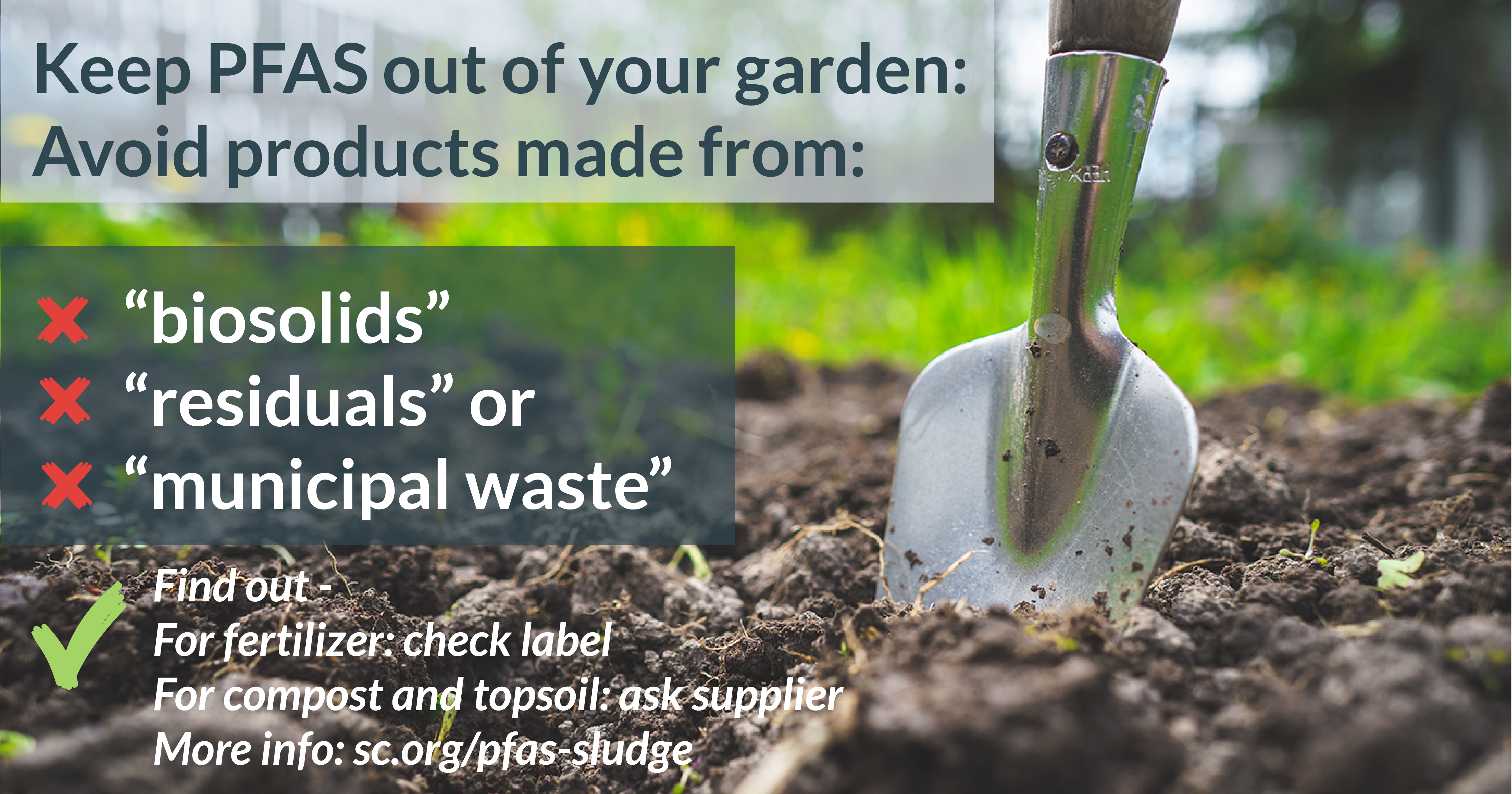Ever since an adult bear and her cubs destroyed my backyard plastic composter, I’ve made buying compost an annual Mother’s Day tradition. Last year, I bought my compost from A1 Organics in the Denver area, and I had an amazing tomato crop. So it was an unwelcome surprise to learn that many commercial composts and fertilizers -- including A1’s “biocomp” -- are made from sewage waste and contain harmful chemicals like PFAS.
Sewage sludge cannot be used on certified organic produce and dairy products. So how did it end up in my previously organic garden?
Sewage waste is commonly used on industrial farm fields, with about half of the nation’s sewage waste being treated and then applied to land for nutrient recycling and an affordable option for disposal.
Ideally, nutrients in sewage could safely be recycled on land as part of the move toward a “circular economy.” But that’s not currently the case. The Ecology Center and the Sierra Club have released a new report that found PFAS in nine home fertilizers made from sewage-biosolids. These products were labeled “eco” or “natural,” but the test results tell a different story: we found toxic PFAS “forever chemicals” in all of the products we tested. Even more concerning, the PFAS chemicals we tested for represent a single strain of concerning compounds commonly found in treated sludge. EPA’s annual review of chemicals has also found antibiotics, persistent pesticides, flame retardants, and heavy metals in these materials.

The land application of sewage sludge from highly contaminated sites has been shown to contaminate local wells, food crops, and dairy products with PFAS chemicals. Maine has discovered alarming levels of PFAS in milk from dairies applying contaminated sludge biosolids. The PFAS levels we measured in the home fertilizers we tested are lower than the levels detected in that milk, but they still exceed what is considered a safe screening level for PFAS in Maine.
The Ecology Center and the Sierra Club are working to strengthen the safeguards for chemicals that many industries release into our wastewater system for disposal. The EPA and states must thoroughly study the contaminants found in sewage sludge and set protective guidelines to ensure that the waste used in both industrial and home fertilizers isn’t a source of PFAS and other contaminants in our food supply.
In the meantime, if you purchase compost, fertilizers, or topsoil, check product labels to find out the source of the materials. Ingredients listed as “biosolids” and “residuals” are code words for sewage sludge. “Municipal waste” could be food scraps and yard trimmings, but it could also be sewage residues. It is always worth asking for clarification.
Sonya Lunder is a guest author and is the Sierra Club's Senior Toxics Advisor for the Gender, Equity & Environment program.


